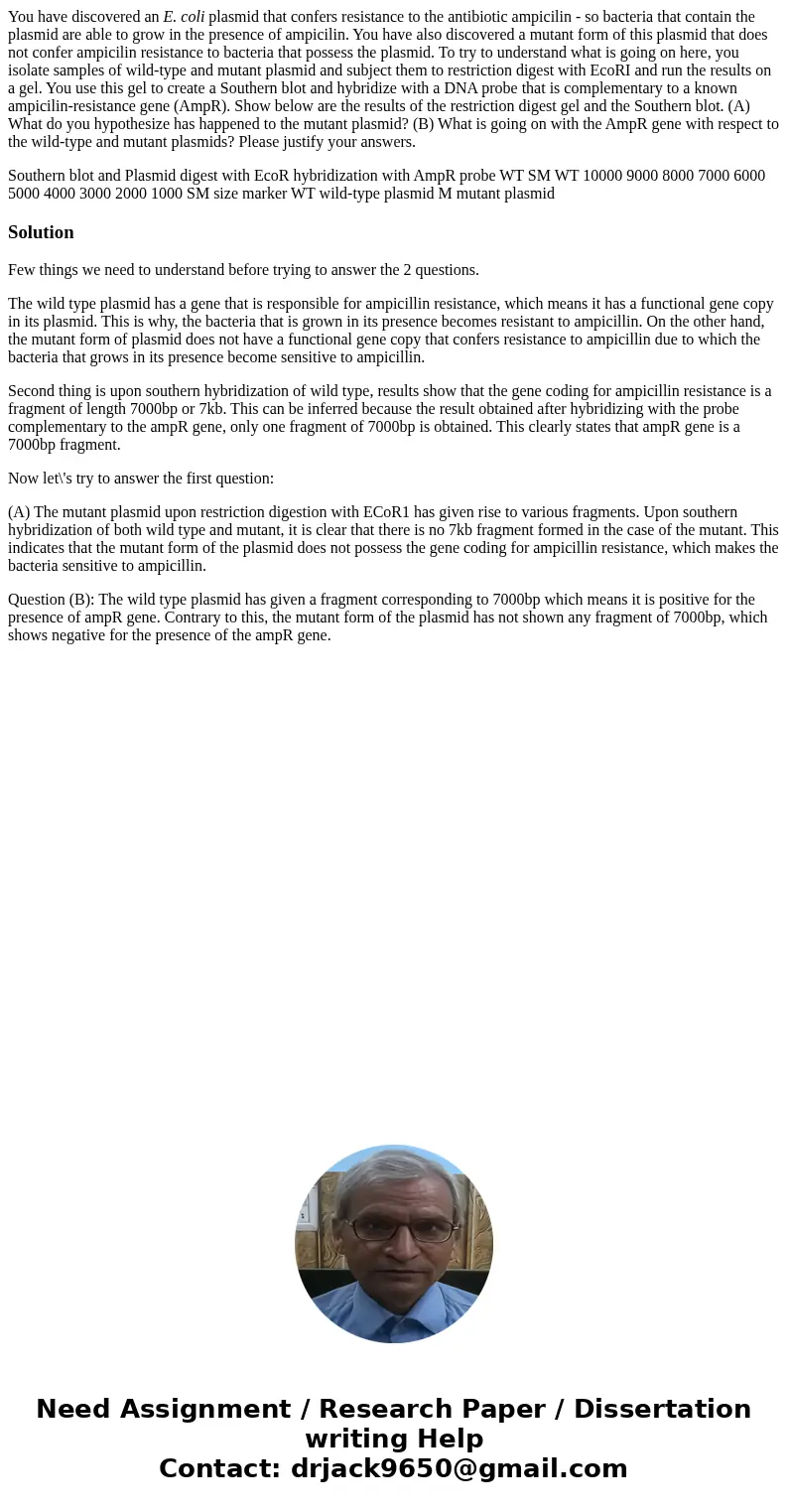You have discovered an E coli plasmid that confers resistanc
You have discovered an E. coli plasmid that confers resistance to the antibiotic ampicilin - so bacteria that contain the plasmid are able to grow in the presence of ampicilin. You have also discovered a mutant form of this plasmid that does not confer ampicilin resistance to bacteria that possess the plasmid. To try to understand what is going on here, you isolate samples of wild-type and mutant plasmid and subject them to restriction digest with EcoRI and run the results on a gel. You use this gel to create a Southern blot and hybridize with a DNA probe that is complementary to a known ampicilin-resistance gene (AmpR). Show below are the results of the restriction digest gel and the Southern blot. (A) What do you hypothesize has happened to the mutant plasmid? (B) What is going on with the AmpR gene with respect to the wild-type and mutant plasmids? Please justify your answers.
Southern blot and Plasmid digest with EcoR hybridization with AmpR probe WT SM WT 10000 9000 8000 7000 6000 5000 4000 3000 2000 1000 SM size marker WT wild-type plasmid M mutant plasmidSolution
Few things we need to understand before trying to answer the 2 questions.
The wild type plasmid has a gene that is responsible for ampicillin resistance, which means it has a functional gene copy in its plasmid. This is why, the bacteria that is grown in its presence becomes resistant to ampicillin. On the other hand, the mutant form of plasmid does not have a functional gene copy that confers resistance to ampicillin due to which the bacteria that grows in its presence become sensitive to ampicillin.
Second thing is upon southern hybridization of wild type, results show that the gene coding for ampicillin resistance is a fragment of length 7000bp or 7kb. This can be inferred because the result obtained after hybridizing with the probe complementary to the ampR gene, only one fragment of 7000bp is obtained. This clearly states that ampR gene is a 7000bp fragment.
Now let\'s try to answer the first question:
(A) The mutant plasmid upon restriction digestion with ECoR1 has given rise to various fragments. Upon southern hybridization of both wild type and mutant, it is clear that there is no 7kb fragment formed in the case of the mutant. This indicates that the mutant form of the plasmid does not possess the gene coding for ampicillin resistance, which makes the bacteria sensitive to ampicillin.
Question (B): The wild type plasmid has given a fragment corresponding to 7000bp which means it is positive for the presence of ampR gene. Contrary to this, the mutant form of the plasmid has not shown any fragment of 7000bp, which shows negative for the presence of the ampR gene.

 Homework Sourse
Homework Sourse